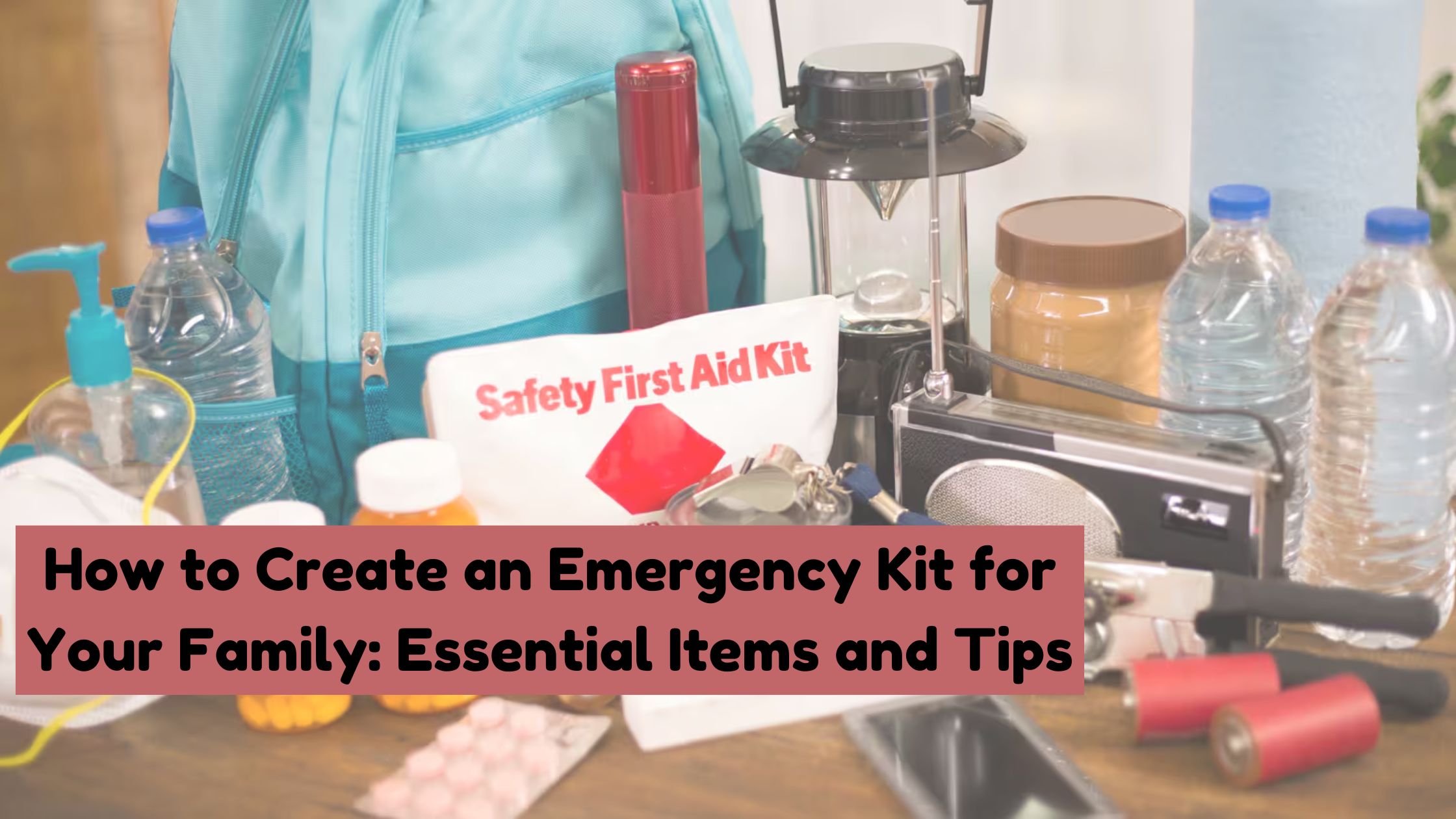Creating an emergency kit for your family is a crucial step in ensuring your loved ones are prepared for unexpected situations. Whether it's a natural disaster, power outage, or any other emergency, having a well-stocked kit can provide peace of mind and safety. In this guide, we'll walk you through the essential items to include in your emergency kit and offer some tips on how to tailor it to your family's specific needs.
Why You Need an Emergency Kit
Emergencies can strike at any time, often without warning. From severe weather events like hurricanes and earthquakes to unforeseen accidents and power outages, being prepared is key. An emergency kit provides the basic supplies your family needs to survive for several days, ensuring you have access to food, water, and medical supplies until help arrives or conditions improve.
Essential Items for Your Emergency Kit
Water
- Quantity: At least one gallon of water per person per day for at least three days.
- Purpose: Water is crucial for drinking, cooking, and sanitation. Consider including water purification tablets or a portable filter if you expect to need water for longer than three days.
Food
- Types: Non-perishable items such as canned goods, dried fruits, nuts, energy bars, and peanut butter.
- Quantity: A minimum three-day supply for each family member.
- Tips: Opt for foods that require little or no preparation. Don't forget to include a manual can opener if you're packing canned goods.
First Aid Kit
- Contents: Bandages, antiseptics, tweezers, scissors, pain relievers, prescribed medications, and any necessary medical supplies for family members with specific health needs.
- Purpose: A well-stocked first aid kit can help treat minor injuries and manage health conditions until professional medical help is available.
Tools and Supplies
- Items: A multi-tool, flashlight, extra batteries, matches or a lighter, a whistle (to signal for help), a dust mask, and a wrench or pliers to turn off utilities.
- Tips: Store these items in a durable, waterproof container to protect them from the elements.
Clothing and Bedding
- Essentials: A change of clothes for each family member, sturdy shoes, blankets, sleeping bags, and rain gear.
- Purpose: Keeping warm and dry is essential in an emergency. Make sure to pack clothing appropriate for your climate and the season.
Personal Hygiene Items
- Basics: Soap, hand sanitizer, toothbrushes, toothpaste, feminine hygiene products, and baby wipes.
- Purpose: Maintaining hygiene during an emergency can help prevent illness and keep morale high.
Important Documents
- Documents: Copies of identification, insurance policies, medical records, bank account information, and emergency contact numbers.
- Storage: Store these documents in a waterproof, portable container.
- Tips: Consider keeping digital copies of important documents on a password-protected USB drive as a backup.
Emergency Contact Information
- Details: A list of emergency contacts, including family members, friends, and local emergency services.
- Tips: Include both phone numbers and email addresses, and consider writing down a meeting place in case family members get separated.
Entertainment
- Items: Books, playing cards, or small games to keep spirits up during prolonged emergencies.
- Tips: This might seem non-essential, but staying occupied can help reduce stress, especially for children.
Tips for Creating and Maintaining Your Kit
Personalize Your Kit
- Every family is different, so tailor your kit to meet your specific needs. For example, if you have infants, include formula, diapers, and baby food. If you have pets, add pet food and supplies.
Regularly Update Your Kit
- Check your emergency kit every six months to replace expired items, update medications, and adjust for seasonal changes. Make it a habit to review and refresh your kit during daylight savings time changes or other regular events.
Store Your Kit in an Accessible Location
- Keep your emergency kit in a place where it can be easily accessed by all family members. Make sure everyone knows where it is stored and how to use its contents.
Practice Your Emergency Plan
- Having an emergency kit is just one part of being prepared. Make sure your family knows what to do in an emergency by practicing your plan regularly.
Conclusion
Creating an emergency kit is a vital step in ensuring your family's safety during unexpected events. By including essential items like water, food, first aid supplies, and important documents, you can be better prepared to face emergencies with confidence. Remember to personalize your kit, update it regularly, and keep it in an accessible location. With a well-prepared kit, you'll be ready to protect your family when it matters most.
